Weather-Resilient Water: Automating Solutions for Reliable Drinking Water Quality
- bNovate

- Aug 18, 2025
- 4 min read
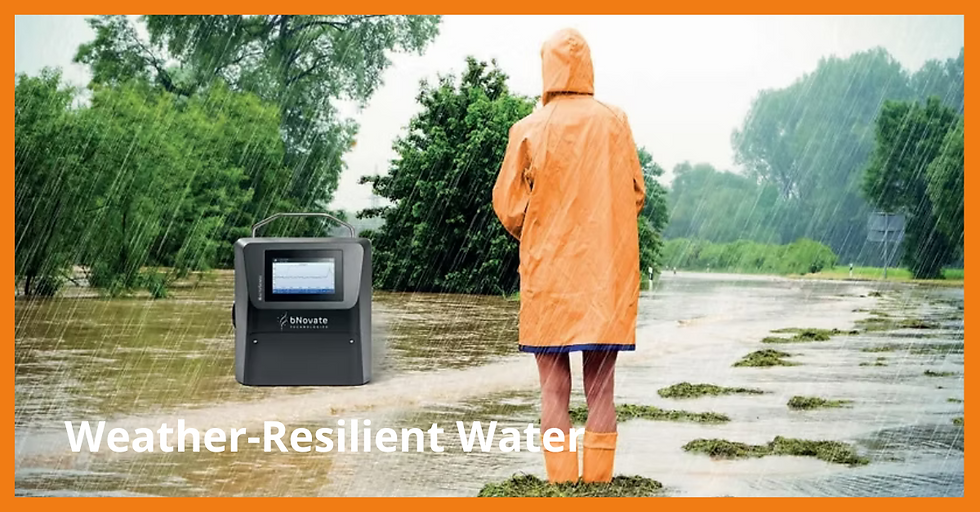
In recent years, the Swiss municipality of Saxon has experienced episodes of heavy bacteriological contamination of its spring water. The pollution primarily occurred during periods of heavy rainfall and snowmelt.
In collaboration with an engineering firm (PMAX), they overcame this problem by installing a fully automated monitoring and control system.
Modern measurement technology, chlorine pumps and shut-off valves are incorporated in an innovative system that guarantees a high-quality water supply. It is based on rain event detection and flow cytometry.
Villages can now be selectively alerted in real-time when risks of contamination occur in their supply area.
Bad weather threatens water quality
At the base of the emblematic Pierre Avoi mountain, the village of Saxon boasts a unique history tied to water. A spa resort in the 1850s and the birthplace of Cristalp mineral water (sold until 2022), the town draws most of its drinking water from mountain springs.
This pure, natural water is injected directly into the network (Figure 1) without filtration or treatment. A network of 10 reservoirs and chambers, along with a communal interconnection system, supplies the homes of 7,300 inhabitants in the area.
A large proportion of the water in Saxon and its mountain communities (up to 70% in an average year) comes from high-altitude springs. Following two heavy bacteriological contaminations in 2019, the commune has developed an automated system to control the risks of microbiological pollution.

Setting up an automated management system
PMAX, a local automation company, implemented Saxon‘s comprehensive microbiological contamination risk management system.
It consists of three parts (see Fig. 2):
The water quality is determined by online flow cytometry;
In the event of increasing bacterial populations, the water supply is interrupted, chlorination takes place, and the lower network is supplied by alternative sources.
The manager is automatically alerted by the system, and he can inform the population if need be.
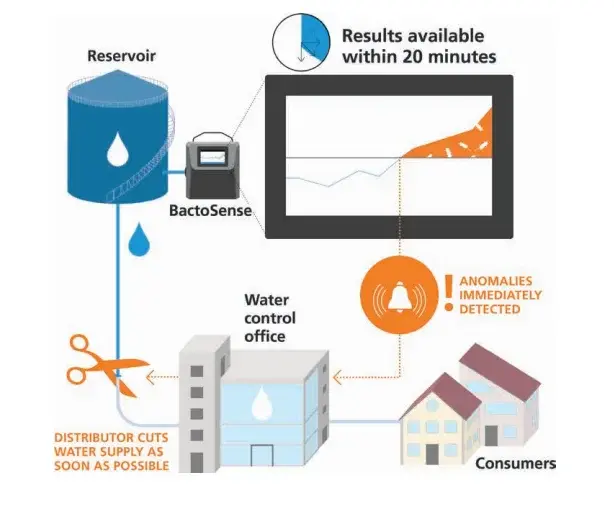
Reservoir surveillance with BactoSense
BactoSense units were installed at two reservoirs (Pessot and Louette) to measure bacteria in the water. In the event of poor quality, the water is automatically isolated.
At the Louette reservoir, measurements are alternately conducted at two distinct inlet points: one from the Arbarey reservoir, which is connected to the upper springs and reservoirs, and the other from the Pleyeux spring inlet (Figure 1).
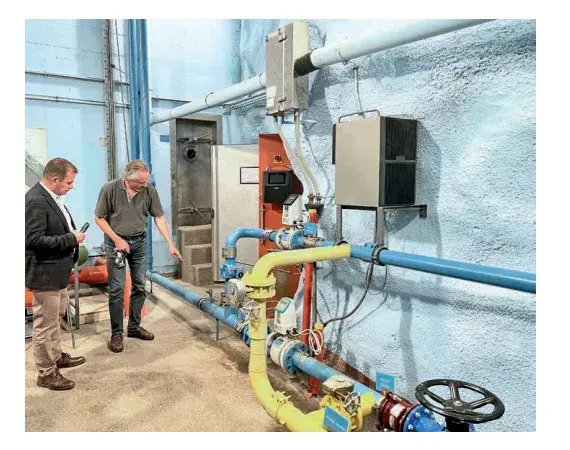
Automated result interpretation
The measurement intervals of BactoSense are set via PLC and SCADA. The frequency of measurements is adjusted depending on real-time weather data, which are obtained from the MeteoSwiss ("RainAlert“) cloud application.
For example, rain periods present more significant pollution risks and require greater attention. The measurement interval is adjusted according to the weather (Figure 4), and the water quality is determined by using BactoSense results.
High HNA (high nucleic acid) cell counts indicate a high risk for microbiological contamination, for example with E.coli, and poor water quality.

Table 1 displays the two available action levels. When the water is of suspicious quality, a chlorination with 0.1 mg/l is done and the frequency of measurements is increased.
When the water is of poor quality, it is chlorinated with 0.2 mg/l and alternative water supplies are tapped. In both cases, the person in charge receives a notification by SMS.

Convincing results for pollution incidents
Here are two examples of four significant events in 2022:
In May, the number of cells increased sharply in both the Pessot and Louette reservoirs. At Louette, the contamination came from the Arbarey catchment (Figure 5) and not the spring of Pleyeux. Chlorination was triggered, and a more detailed examination led to the rejection of specific springs, which an employee of the Saxon Water Department manually discharged.
Once the number of HNA cells had returned to normal, chlorination was stopped. After two days, the follow-up microbiological monitoring samples showed mostly conforming values, and the results were as expected after three days. The surge in bacteria was attributed to intense snowmelt rather than a specific rainfall event.
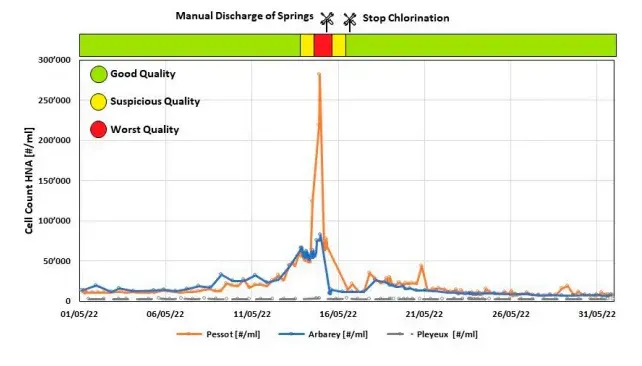
In late December, shortly before Christmas, an incident occurred at the Louette reservoir.
The BactoSense system promptly identified an anomaly (Figure 6), leading to the initiation of chlorination in the Pessot reservoir and isolation of the Louette reservoir. Swift action was taken, effectively resolving the situation and ensuring a joyful festive season for the residents.
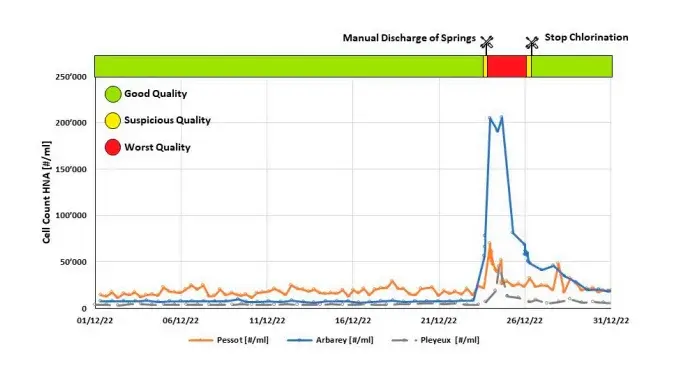
Conclusion: saving time and resources
The prevention system installed by the municipality of Saxon consists of precipitation analysis combined with online bacterial monitoring, automated valves and chlorination pumps.
This highly effective system has a low resource and energy consumption.
Due to targeted rejection of individual sources, water treatment was only required for a few days in 2022.
In this way, for most of the time, the drinking water network supplies untreated spring water and
the safety of the drinking water distribution for the village of Saxon is simultaneously increased.
Benefits of an automated water quality system
Increased water security for the communities;
Localisation of microbial contamination events, isolation of affected communities and targeted information to inhabitants;
Low power consumption for the entire microbiological contamination risk management system (a few hundred watts), which leads to a cost of around 4 to 5 cents per m3;
Reduced chlorine usage: In 2022, 3.5 kg of chlorine was used. In contrast, continuous chlorination would have required around 129 kg of chlorine;
Due to the targeted discharge from individual sources, water treatment was only required for a few days in 2022. Moreover, only water of poor quality is discharged.
Book a demo today to explore how BactoSense revolutionises how water quality is managed in drinking water production and water reuse by providing continuous, actionable insights.







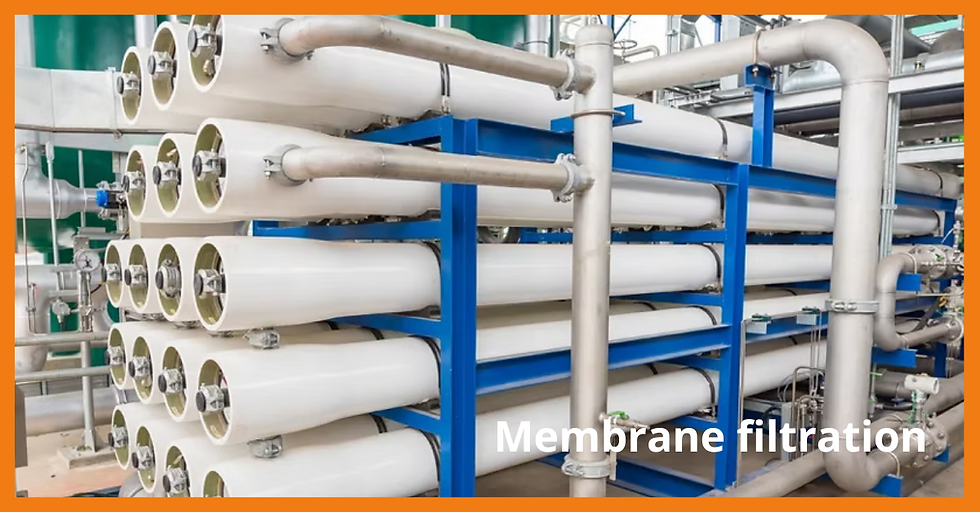


Comments